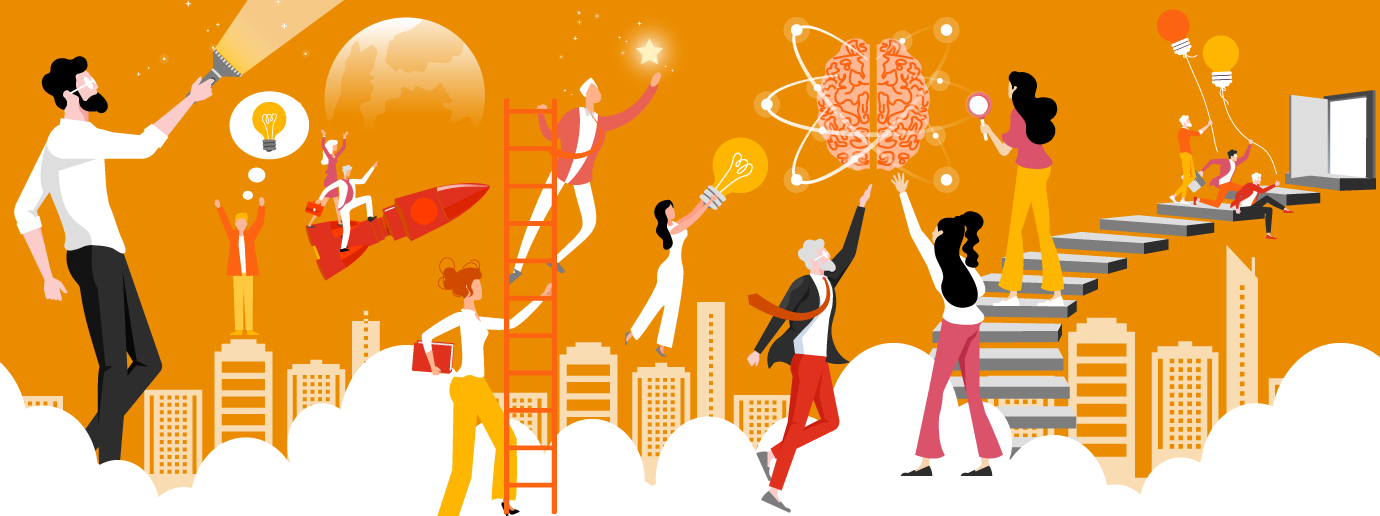A story has no beginning or end: arbitrarily one chooses that moment of experience from which to look back or from which to look ahead, wrote the English novelist Graham Greene.
Leaders preparing for tomorrow’s workforce face a world where the old preconceptions do not apply. Yesterday’s assumptions about how workers behave and what they value are being upended.
We are in a new reality, one where employers need to harness a different mix of skills, support new ways of working and learning, and create new work environments that meet the needs of a diverse workforce. People are demanding to be more autonomous, entrepreneurial and free from the constraints of time and place.
Businesses are urged to create, in an agile way where trial and error is allowed, experiences for the talent they have to stick around, and for both, people and business to build together success stories.
In times of uncertainty, where technology and immediateness are redefining forces, nothing beats close relationships and healthy work environments.
Throughout the year of 2019, we presented five actions that organisations could— and should— be taking to simulate people’s experience.These are based on PwC’s Secure your future people experience report, and are key for businesses and people to thrive, now and in the future
Now, in 2020, we close the People’s Experience Series with a recap of these five crucial actions. Is that it? Well, we have also added some advice of our own that employers want to bear in mind when thinking of their people and their needs both in the present and in the future.
It’s a recap!

Tackle ‘burnout’ and boost vitality
People with the highest work engagement levels also report high burnout levels, as they’re continually connected to their demanding work. And while wellness programmes are good, they merely treat the symptoms but not the cause.
For that, businesses need to build in more periods of recovery by encouraging their people to take time off, such as frequent, mandatory holidays while also making sure they don’t return to an overwhelming workload.
Read our article Burn the burnout down!
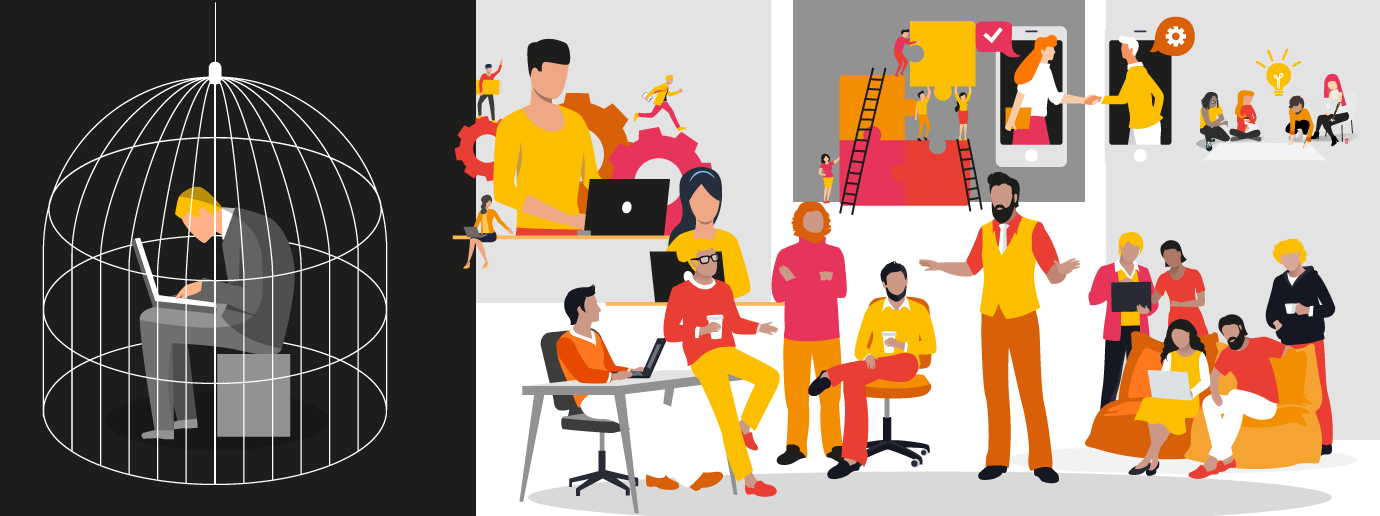
Build social resilience
Loneliness is a growing issue in today’s society and its consequences go beyond the personal sphere. The rush at the workplace and the pressure of deadlines give people less time to establish relationships both in and outside the workplace. To tackle this issue and build social resilience, as an employer, you should motivate a spirit of collaboration, not competition, building upon the input and ideas from others but also considering individual work on the equation.
Think of embedding collaborative technologies, such as internal virtual social platforms, to keep work relationships healthy.
When it comes to tackling the negative impact of loneliness on creativity, creating coworking spaces alongside traditional offices, inviting people from other companies and different lines of business to come together in a physical space, might be just what you need.
Read our article Redesigning loneliness
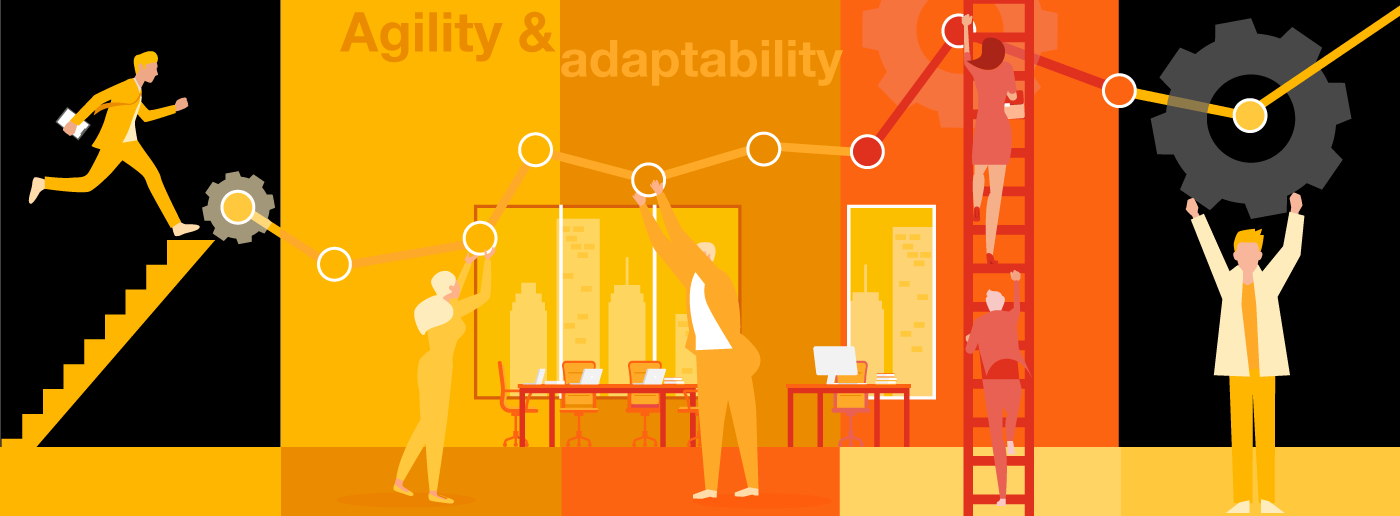
Nurture agility and adaptability
Are change and adaptation the same thing? When changing, we become something different, when adapting, we arrange our circumstances to make them fit for certain new realities. It’s crucial that employees view change as something constant and as an opportunity to further develop their careers. At the same time, businesses need to think of agile and adaptable solutions to keep up with the pace of change.
For instance, training initiatives need to be adapted to current employees’ ways of consuming information, taking into consideration that people are growing more accustomed to getting information in real time, in short sprints, through online platforms, available 24/7. Bottom line, they’re looking for personalised content.
As it is, businesses might also want to provide the opportunity for employees to set their own goals and expectations within the company, and not assume their motivations are based on age, gender and life stage.
Job rotations are also a possible solution within the business, making it easier for people to move out of roles that are no longer required and into new value-adding positions. Remember: employees first look to see if there is an opportunity at their current company before looking elsewhere.
Read our article: Forging a culture of change
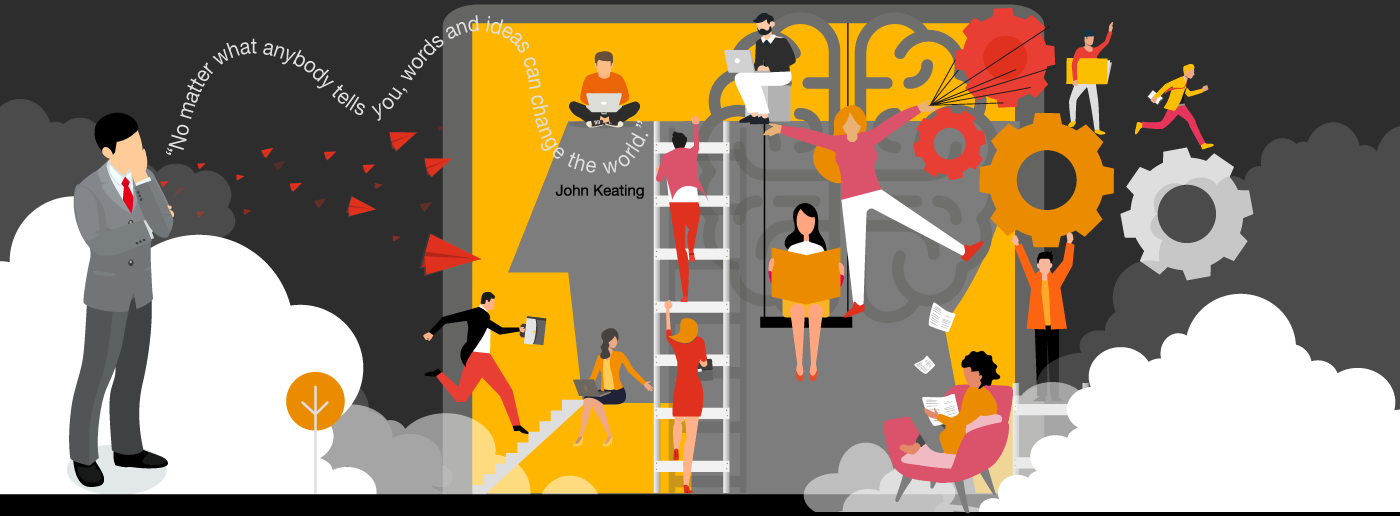
Provide autonomy
The feeling of disempowerment, lack of motivation and a general lack of well-being leave deep psychological marks, inhibiting employees from unleashing their full potential. Employees who feel they can act with autonomy in their day-to-day work environment tend to have stronger job performance, higher job satisfaction and greater commitment to the organisation.
Companies have to foster transparency, sharing with their people the information they need to make the right decisions when working autonomously. Actively involving employees in the company’s change management programmes for example, might motivate them to more readily adopt what they helped to create.
Trusting relationships are also key to empowerment. Working under the notion of trust is the assumption that people are trustworthy until evidence emerges to the contrary. This approach is the opposite of the assumption that people need supervision to behave appropriately.
A move towards an adult-to-adult trusting environment that allows people choice and freedom by default can enable an empowering and autonomous culture in corporations.
Read our article Autonomous equation
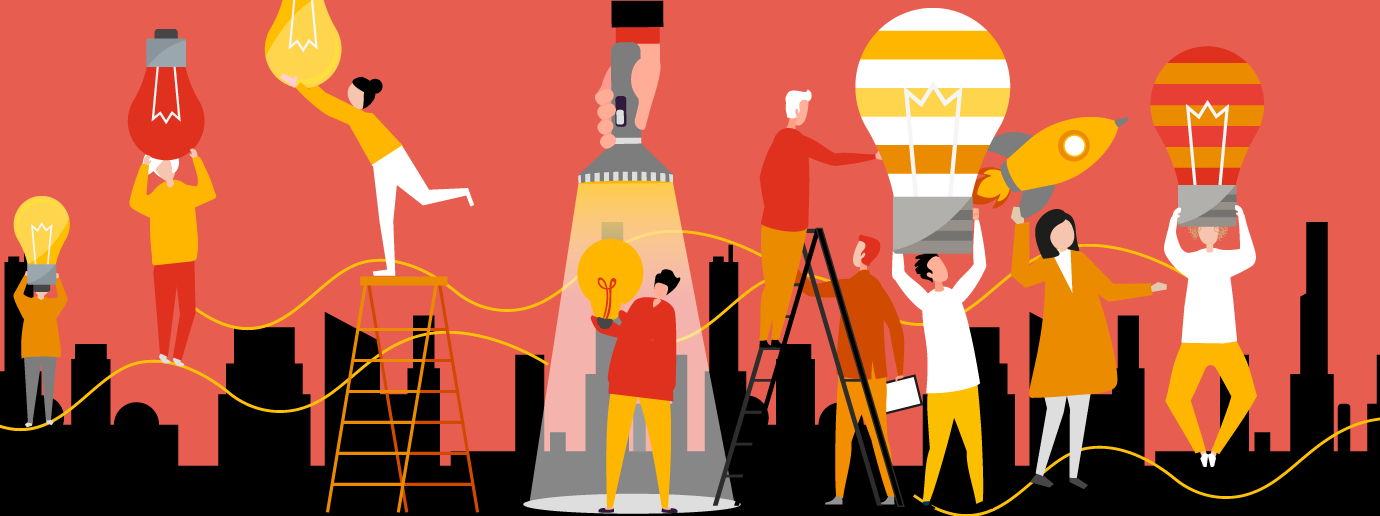
Support ‘intrapreneurship’
Developing new and disruptive ideas doesn’t come just from leaders, no, for Pluto’s sake!. Every employee, no matter their seniority level or position within a company, has the potential to induce change at different levels.
To support intrapreneurship within a company, the first step is to create a safe psychological environment where employees feel encouraged and safe to share new and challenging ideas. At the same time, they also need to have the space, time and opportunity to experiment and try out ideas that may or may not work.
It’s important to reward both the victories and the defeats. Why? Because by doing so, people feel supported to take innovation risks, no matter the outcome.
Failure isn’t more than an additional step to the ones who want to succeed. Or, better yet, It’s a rear door that takes you to the garden to take a deep breath, and then, back to the main door so you can start again.
Read our article Facilitating intrapreneurship in 3 steps
Do what’s best for you
So far, we’ve been giving you approaches that are considered best practices among several companies in the world. However, this is not enough. Like a professional dancer, it’s not good enough to just know the choreography; you have to make it your own, to represent what makes you “you” on the dancefloor. For business, the same applies.
For this reason, we came up with four pieces of advice you don’t want to skip when developing your own people’s experience.
- Think ‘signature processes’, in addition to ‘industry best practices’
Companies need to embrace unique ‘signature processes’ that reflect their history and values. The adoption of so-called best practices alone isn’t enough to beat the competition; they can be imitated by everyone. In contrast, signature processes are idiosyncratic and embedded in the organisation’s heritage and values, so competitors are unlikely to gain the same value from emulating them.
- Close the gap between rhetoric and reality
An organisation’s rhetoric must match reality. This can be achieved by ensuring that the initiatives aimed at delivering the right people experience are consistently felt across the organisation.
Managers need to be coached on how to effectively implement the initiatives to become a part of their performance evaluations. Policies and practices can often be derailed if managers lack the incentives, will, skill or knowledge to make them work.
Leadership should ensure that the culture and people practices of the organisation are reinforced on a day-to-day basis, because this boosts the value and importance of these initiatives.
- Beware of unintended consequences
Organisations must try to anticipate and even test the expectations that they are placing on their employees when they change work parameters.
Providing employees with the autonomy to choose when and where they perform work may have the unintended consequence of hampering their vitality and social resilience. Leadership must be mindful of this.
Similarly, off-site working can lead to isolation and can intensify a 24/7 ‘always on’ culture as people lengthen their workdays to counter the unspoken assumption among others that not working in the office means working less.
- Be ready and able to move
Acting on many of the points raised in this report will require fast experimentation in small segments of the firm as a starting point. Corporations will also need to normalise the concept of acceptable failure, as it is essential in adapting to the future of work. Finally, it will be increasingly important for organisations to challenge current people practices to see if they really are adding value, and act swiftly to stop those that are not. This will ensure that everyone is tightly focused on activities that do, or will, have an impact.
The way forward
A winning people experience is the X factor that turns organisations into magnets for talent, unleashes the full creative potential within their workforce and enables them to embrace disruptive change as an opportunity rather than a threat.
Whether it’s morale-sapping upheaval, the threat of social dislocation or some other disruption, a fast changing world of work can make it more difficult to create and sustain a winning people experience.
Yet the shifts can also provide the catalyst for overcoming the stresses and frustrations of the past, and developing an environment that fosters agility, innovation and entrepreneurialism.
This is an opportunity not to be missed.
As our report highlights, it’s important for organisations to be proactive instead of reactive, especially when it comes to recognise the value of their people’s experience.
It is possible to bring together communities of innovators within large businesses, empowering people to deliver in ways that best suit them. It is possible to turn flexible working from a grudging policy into a differentiating source of energy, engagement and loyalty. And there are ways to help employees see into the future, judge what skills they need and develop the capabilities for sustained employability.
The organisations out in frontline are in the strongest position to prosper, both now and in the future. Those companies that don’t act quickly risk losing prized talent and failing to attract the very people they need to adapt and compete.

